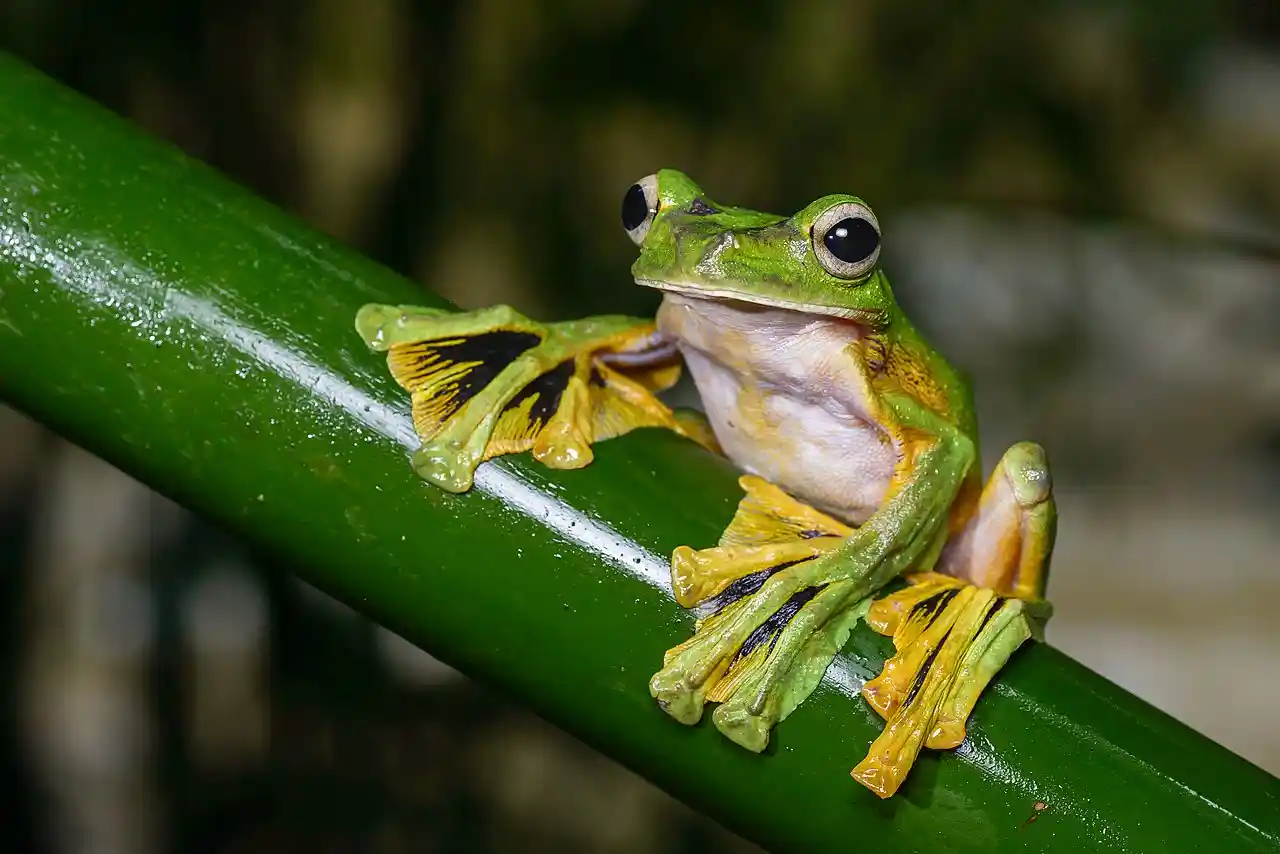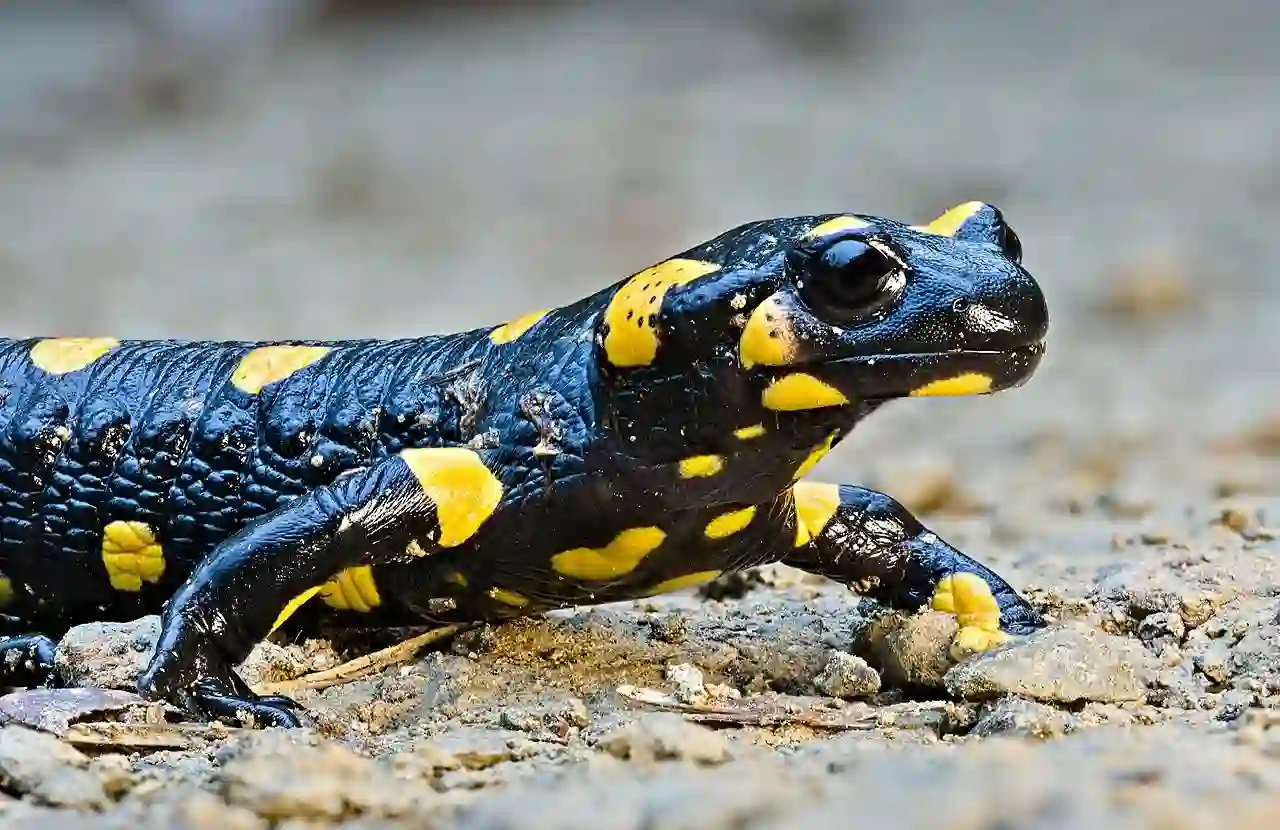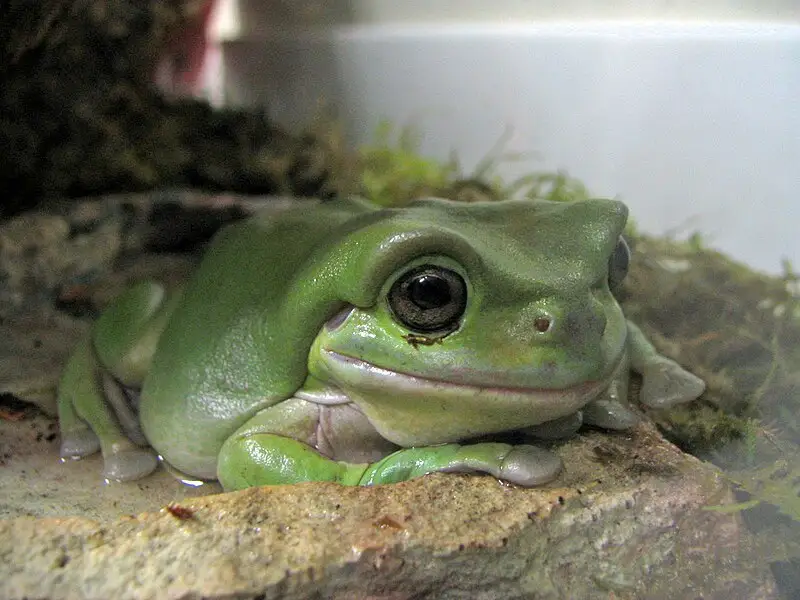Salamanders, with their sleek bodies and unique ability to regenerate lost limbs, have long fascinated both scientists and nature enthusiasts.
These amphibians can be found in various habitats across the globe, from damp forests to rocky streams.
One intriguing aspect of salamanders is their thermoregulation, which raises the question: are salamanders cold-blooded creatures?
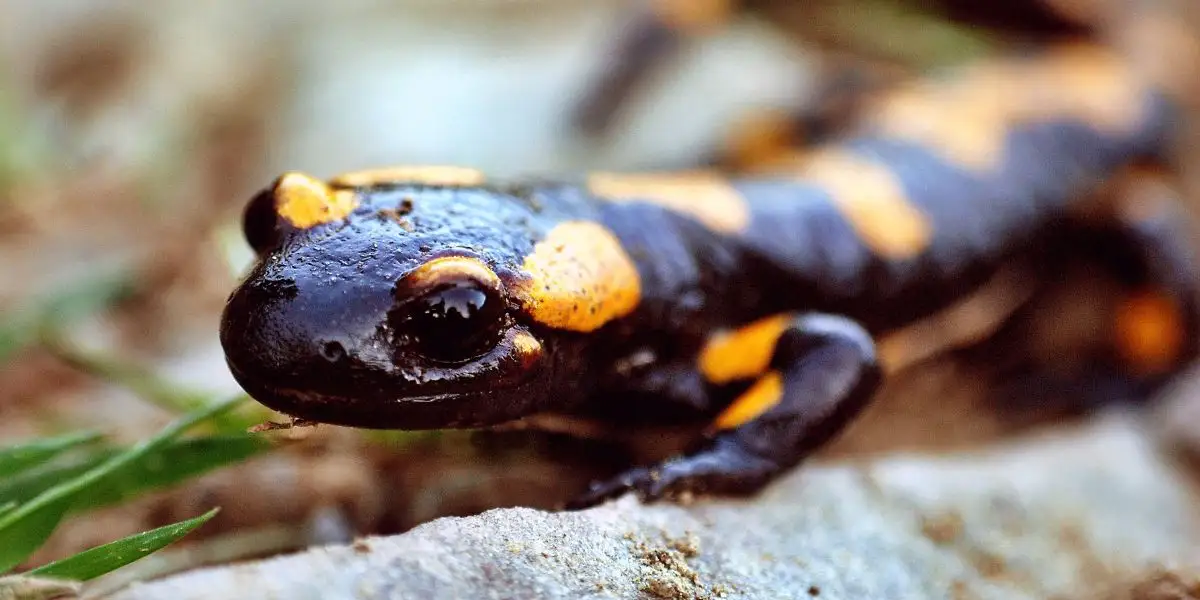
To understand the concept of cold-bloodedness, it is essential to grasp the broader idea of thermoregulation in animals.
Unlike warm-blooded creatures, which can maintain a relatively constant internal body temperature, cold-blooded animals rely on external heat sources to regulate their body temperature.
Definition and Characteristics of Cold-Bloodedness
Definition of Cold-Bloodedness
To understand why salamanders are classified as cold-blooded creatures, it is important to delve into the concept of cold-bloodedness and its defining characteristics.
Cold-bloodedness, also known as ectothermy, refers to the reliance on external heat sources to regulate body temperature.
Unlike warm-blooded animals, which generate heat internally, cold-blooded animals adjust their body temperature by moving to warmer or cooler environments.
Ectothermic Nature of Cold-Blooded Animals
The ectothermic nature of cold-blooded animals, including salamanders, has several key characteristics.
Their body temperature is highly influenced by the temperature of their surroundings.
If the environment is warm, their body temperature rises, and if it is cool, their body temperature decreases.
This dependence on external heat sources means that salamanders cannot actively generate heat to regulate their body temperature.
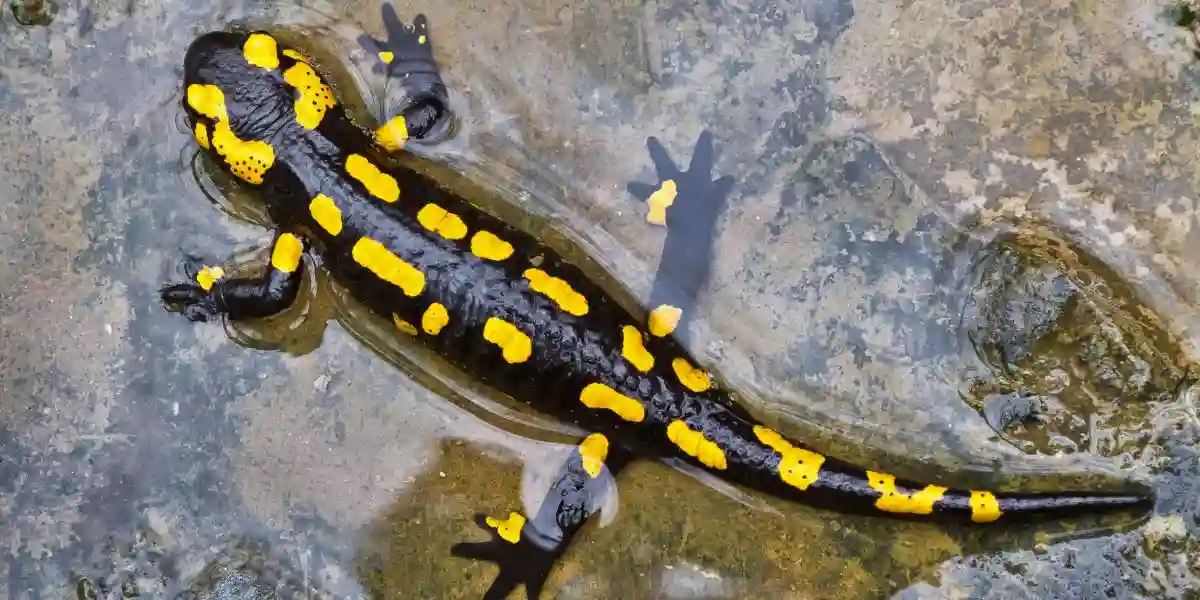
Advantages of Being Cold-Blooded
The advantages of being cold-blooded are evident in the energy requirements of these animals.
Cold-blooded creatures have lower metabolic rates compared to warm-blooded animals.
This means that they require less energy to maintain their body temperature and overall physiological functions.
As a result, salamanders can survive on limited food resources and can adapt to environments with fluctuating temperatures.
Disadvantages of Being Cold-Blooded
Being cold-blooded also comes with its disadvantages.
Cold-blooded animals are more vulnerable to temperature fluctuations, as they cannot internally regulate their body temperature like warm-blooded animals can.
Extreme heat or cold can have detrimental effects on their metabolism and physiological processes.
Cold-blooded animals may have limited activity during cooler temperatures, as their metabolic rates decrease, making them less active and slower in their movements.
Cold-Bloodedness in Salamanders
Their cold-bloodedness is evident in their reliance on external heat sources for thermoregulation.
They actively seek out warm areas, such as sunny spots or warm surfaces, to raise their body temperature.
This behavior allows them to increase their metabolic activity and perform essential functions like digestion and reproduction.
Salamanders may seek shade or cooler areas to lower their body temperature during hot weather or when they need to conserve energy.
Salamander Adaptations and Behaviors
Cold-bloodedness is characterized by the reliance on external heat sources to regulate body temperature.
Salamanders, as cold-blooded creatures, exhibit this ectothermic nature, which influences their metabolism, energy requirements, and overall survival.
While being cold-blooded has its advantages in terms of energy conservation and adaptability, it also makes them more susceptible to temperature fluctuations.
Understanding the defining characteristics of cold-bloodedness helps us appreciate the unique adaptations and behaviors of salamanders in their natural habitats.
Physiological Evidence of Salamanders’ Cold-Bloodedness
Salamanders’ Metabolic Rate and Heat Production
To further explore the cold-blooded nature of salamanders, it is essential to examine the physiological evidence that supports this classification.
By understanding their metabolism, energy production, and body temperature regulation, we can gain insight into the mechanisms that make salamanders cold-blooded creatures.
Reliance on External Heat Sources for Thermoregulation
Salamanders have a relatively low metabolic rate compared to warm-blooded animals.
This means that they do not produce as much internal heat through metabolic processes.
Instead, they rely on external heat sources to raise their body temperature and increase their metabolic activity.
This reliance on environmental temperatures for thermoregulation is a key characteristic of cold-blooded animals.
Sunbathing Behavior and Body Temperature Regulation
Body temperature regulation is crucial for salamanders’ survival and physiological functions.
They exhibit behaviors that demonstrate their dependence on external heat sources. For example, salamanders often bask in the sun to warm up their bodies.
By exposing themselves to sunlight, they can absorb heat and raise their body temperature, which in turn increases their metabolic rate.
This behavior is essential for digestion, reproduction, and overall physiological processes.
Cooling Behaviors and Energy Conservation
Salamanders also exhibit behaviors to cool down their bodies when temperatures are too high.
They may seek shade or cooler areas to lower their body temperature and conserve energy.
This ability to actively seek out suitable temperature conditions further supports their cold-blooded nature.
Behavioral Adaptations to Temperature Changes
In response to temperature changes, salamanders also display behavioral adaptations.
For instance, during colder periods, salamanders may become less active and slow down their movements.
This decrease in activity is a result of their lower metabolic rate, which decreases in cooler temperatures.
By conserving energy and reducing activity, salamanders can survive in environments with limited food resources and lower temperatures.
Influence of Habitat on Thermoregulation
The habitats in which salamanders are found play a significant role in their thermoregulation.
Different species of salamanders inhabit various environments, such as forests, wetlands, or underground habitats.
These habitats offer different temperature ranges, allowing salamanders to adjust their body temperature accordingly.
This adaptability to different environments further supports their cold-blooded nature.
Implications for Salamander Classification as Cold-Blooded Creatures
The physiological evidence strongly supports the classification of salamanders as cold-blooded creatures.
Their low metabolic rate, reliance on external heat sources for body temperature regulation, and behaviors in response to temperature changes all point to their ectothermic nature.
Understanding the physiological mechanisms behind their cold-bloodedness provides valuable insights into the unique adaptations and survival strategies of salamanders in their diverse habitats.
Adaptations and Behaviors Related to Cold-Bloodedness in Salamanders
Habitat Selection and Temperature Adaptations
The cold-blooded nature of salamanders is accompanied by a range of adaptations and behaviors that allow them to thrive in their environments.
These adaptations and behaviors are closely tied to their reliance on external heat sources for thermoregulation and highlight the unique strategies employed by these amphibians.
Aestivation and Hibernation: Dormancy Strategies
One of the key factors influencing salamanders’ thermoregulation is their choice of habitat.
Different species of salamanders can be found in a variety of environments, including forests, wetlands, and even underground.
These habitats offer different temperature ranges, allowing salamanders to adjust their body temperature accordingly.
By selecting habitats that provide suitable temperature conditions, salamanders can optimize their physiological functions and overall survival.
Sun Basking and Heat Absorption
During periods of extreme temperatures, salamanders have the ability to enter a state of dormancy known as aestivation or hibernation.
Aestivation occurs during hot and dry periods when salamanders may burrow into the ground or seek shelter in cool, moist areas to escape the heat.
This dormancy allows them to conserve energy and reduce water loss.
Hibernation occurs during colder winter months when salamanders may retreat to underground burrows or other protected areas to avoid freezing temperatures.

These adaptations enable salamanders to survive in environments with extreme temperature fluctuations.
Seeking Shade and Cooling Behaviors
Salamanders also employ various thermoregulation mechanisms to maintain their body temperature within a suitable range.
One such mechanism is basking in the sun.
By exposing themselves to sunlight, salamanders can absorb heat and raise their body temperature.
This behavior is particularly important for increasing their metabolic rate and facilitating essential physiological processes.
Color Change and Skin Adaptations for Temperature Regulation
Salamanders may seek shade or cooler areas to lower their body temperature when temperatures are too high.
This behavior helps them conserve energy and prevent overheating.
Some species of salamanders have specialized skin cells that can change color to absorb or reflect sunlight, further aiding in temperature regulation.
Limb Regeneration and Ectothermic Advantage
Another interesting adaptation related to cold-bloodedness in salamanders is their ability to regenerate lost limbs.
This remarkable regenerative ability is influenced by their ectothermic nature.
Lower metabolic rates and reliance on external heat sources allow salamanders to allocate energy towards tissue regeneration, enabling them to regrow limbs that have been damaged or severed.
Overall Adaptations and Behaviors in Cold-Blooded Salamanders
Salamanders have evolved a range of adaptations and behaviors that are closely tied to their cold-blooded nature.
Their choice of habitat, ability to aestivate or hibernate, and thermoregulation mechanisms such as basking and seeking shade all contribute to their survival and success in diverse environments.
The unique adaptations and behaviors related to cold-bloodedness in salamanders highlight the remarkable strategies employed by these amphibians to maintain their body temperature and thrive in their ecological niche.
Comparison with Warm-Blooded Animals
Thermoregulation Strategies: Cold-Blooded vs. Warm-Blooded Animals
While salamanders are classified as cold-blooded creatures, it is interesting to compare their thermoregulation strategies with those of warm-blooded animals, such as mammals and birds.
Warm-blooded animals have the ability to maintain a relatively constant internal body temperature, regardless of the temperature of their surroundings.
This ability, known as endothermy, sets them apart from cold-blooded animals like salamanders.
Advantages of Endothermy in Warm-Blooded Animals
One of the key advantages of warm-bloodedness is the ability to thrive in a wide range of environments, including extreme cold or heat.
Warm-blooded animals can generate heat internally through metabolic processes, allowing them to maintain a constant body temperature even in challenging conditions.
This ability provides them with a greater ability to occupy diverse habitats and adapt to changing environmental conditions.
Reliance on External Heat Sources: Cold-Blooded Animals
Salamanders and other cold-blooded animals rely on external heat sources to regulate their body temperature.
They are more dependent on their environment and may need to adjust their behavior or seek out specific microclimates to maintain an optimal body temperature.
While this reliance on external heat sources allows cold-blooded animals to conserve energy, it also makes them more susceptible to temperature fluctuations and limits their ability to inhabit extreme environments.
Energy Requirements: Metabolic Rates and Food Intake
Another significant difference between cold-blooded and warm-blooded animals is their energy requirements.
Warm-blooded animals have higher metabolic rates and require a greater intake of food to sustain their internal heat production and maintain a constant body temperature.
This higher energy demand allows them to be more active and engage in sustained physical activity for longer periods.
Energy Efficiency and Adaptability: Cold-Blooded Animals
Cold-blooded animals like salamanders have lower metabolic rates and can survive on limited food resources.
Their energy requirements are lower because they do not need to generate as much internal heat.
This energy efficiency allows them to adapt to environments with limited food availability and periods of low activity, such as during colder temperatures or when resources are scarce.
Flexibility and Behavior: Cold-Blooded Animals
Both cold-blooded and warm-blooded animals have their advantages and disadvantages when it comes to thermoregulation.
Cold-blooded animals like salamanders have the flexibility to adapt to their surroundings and conserve energy.
They can adjust their behavior and seek out suitable temperature conditions.
Warm-blooded animals have a higher metabolic rate and can actively regulate their body temperature, providing them with a greater ability to withstand extreme conditions.
Contrasting Thermoregulation Strategies
The comparison between cold-blooded salamanders and warm-blooded animals highlights the contrasting strategies employed for thermoregulation.
While salamanders rely on external heat sources and exhibit behaviors to adjust their body temperature, warm-blooded animals can generate heat internally and maintain a constant body temperature.
Each type of thermoregulation has its advantages and disadvantages, allowing these animals to thrive in different ecological niches and adapt to varying environmental conditions.
Frequently Asked Questions
Salamanders have various adaptations that allow them to survive in cold weather. While their ability to withstand low temperatures depends on the species, many salamanders have physiological and behavioral adaptations. Some species burrow into the ground or find shelter in leaf litter or logs to avoid freezing temperatures. They can also slow down their metabolism, enter a state of hibernation or torpor, and survive on stored body fat until more favorable conditions return.
Salamanders are ectothermic animals, which means they rely on external sources of heat to regulate their body temperature. They employ several strategies to keep warm. During colder periods, salamanders seek out warmer microhabitats, such as basking in the sun or occupying areas with higher ambient temperatures. They may also move closer to heat-retaining surfaces like rocks or logs. Additionally, some salamanders can increase their metabolic rate to generate internal heat, but their ability to do so is limited compared to endothermic animals like mammals.
Salamanders rely on external sources of heat to regulate their body temperature, but they do not have the same level of dependency on heat as warm-blooded animals. While salamanders require suitable temperature ranges for optimal physiological functioning and activity, they can tolerate a wide range of temperatures depending on their species. As ectotherms, their metabolic rate and bodily functions are influenced by environmental temperature fluctuations.
Salamanders, in general, are better adapted to cooler and moister environments, and extreme heat can be challenging for them. While some species have higher heat tolerance than others, prolonged exposure to extreme heat can be detrimental to their health. Salamanders typically seek out cooler and more shaded areas or retreat into burrows or underground habitats during periods of intense heat to reduce their exposure and prevent dehydration.
Conclusion
Salamanders are indeed cold-blooded creatures, relying on external heat sources to regulate their body temperature.
Their physiological characteristics, such as low metabolic rates and dependence on environmental conditions, support this classification.
Salamanders’ ability to adapt to various habitats and employ thermoregulation mechanisms highlights the significance of their cold-bloodedness in their survival and ecological role.
Understanding the thermoregulatory strategies of these fascinating amphibians adds to our appreciation of their unique adaptations and their place in the natural world.


